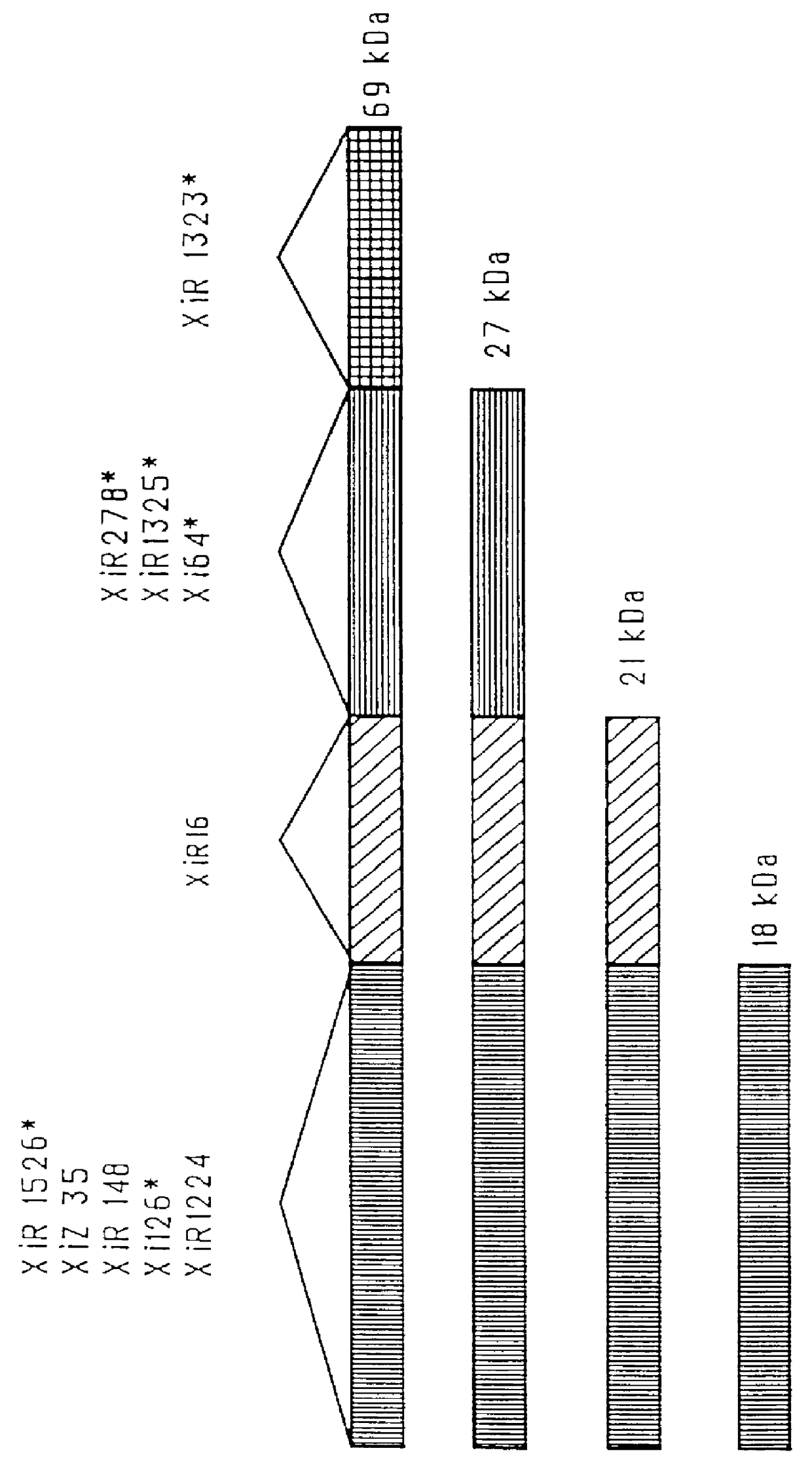immunogenic compositions for mucosal administration of pneumococcal surface protein A (PspA)
a technology of surface protein and composition, which is applied in the direction of antibacterial agents, antibody medical ingredients, peptide sources, etc., can solve the problems of nasopharynx organisms giving rise to symptomatic sinusitis or middle ear infections, and the present prospects of pneumococcal disease are problematic, and the effect of reducing the number of infections
- Summary
- Abstract
- Description
- Claims
- Application Information
AI Technical Summary
Benefits of technology
Problems solved by technology
Method used
Image
Examples
example 1
This Example illustrates the provision of a model for pneumococcal carriage in mice.
Seven different strains of S. pneumoniae were inoculated in 10 .mu.l volumes with log-phase cultures in the nares of CBA / N XID mice over a period of several minutes using slow delivery from a 20 .mu.l Pipetman. After 6 to 7 days, the mice were sacrificed and their trachea was cut just below the larynx. 50 .mu.l of sterile saline was instilled and washed out through the nares. The area washed represents the pharynx and nasal tissues. Six of these strains was able to establish carriage without concomitant sepsis or bacteremia. One of the seven strains, (A66, a virulent capsular type 3 strains) killed all four of the i.n. infected CBA / N mice within 3 days. The results are shown in the following Table I:
example 2
The procedure of Example 1 was repeated by inoculating the nares of BARB / By mice with two of three pneumococcal isolates used. Carriage was observed with all three strains, without bacteremia or sepsis. The results are shown in the following Table II:
example 3
This Example shows the effects of i.n. inoculation on lung infection.
With three of the strains examined for carriage in Example 1, the numbers of pneumococci in the lung were examined at the time of sacrifice. The results obtained are shown in the following Table III:
The data shown in this Table III illustrates the fact that, although the carried pneumococci do not generally cause detectable bacteremia or sepsis, they can spread in at least small numbers to the lung. The ability of S. pneumoniae to spread from the nasopharynx to the lung emphasizes the importance of a vaccine blocking carriage in the upper airways.
PUM
| Property | Measurement | Unit |
|---|---|---|
| volumes | aaaaa | aaaaa |
| volumes | aaaaa | aaaaa |
| ionic strength | aaaaa | aaaaa |
Abstract
Description
Claims
Application Information
 Login to View More
Login to View More - R&D
- Intellectual Property
- Life Sciences
- Materials
- Tech Scout
- Unparalleled Data Quality
- Higher Quality Content
- 60% Fewer Hallucinations
Browse by: Latest US Patents, China's latest patents, Technical Efficacy Thesaurus, Application Domain, Technology Topic, Popular Technical Reports.
© 2025 PatSnap. All rights reserved.Legal|Privacy policy|Modern Slavery Act Transparency Statement|Sitemap|About US| Contact US: help@patsnap.com



